 | TODAY IN SCIENCE HISTORY
NEWSLETTER - 30 AUGUST |
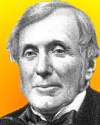 Sir John Rennie was born on 30 Aug 1794, to a father who was himself a great engineer, and that was the same profession for which the young Rennie trained. Their works include some distinctive features in London—three bridges that span the River Thames. One is named the Waterloo Bridge, another after Southwark, and probably the most famous was London Bridge (not to be confused with Tower Bridge). In this chapter on Sir John Rennie from Captains of Industry (1890), you can trace young Rennie through his preparation, travel around Europe to experience the great structures there, and to his achievements. Like his father he became a distinguished engineer of ports and land drainage works. He was consulted about several important early railway schemes. The Royal William Yard, Plymouth was purpose built in 1835 by Sir John Rennie as a naval victualling yard. Around 70 Martello towers were build around the south east shores of England under his direction as defensive positions to protect English shores from French invaders. Are the great engineers of today so versatile? Sir John Rennie was born on 30 Aug 1794, to a father who was himself a great engineer, and that was the same profession for which the young Rennie trained. Their works include some distinctive features in London—three bridges that span the River Thames. One is named the Waterloo Bridge, another after Southwark, and probably the most famous was London Bridge (not to be confused with Tower Bridge). In this chapter on Sir John Rennie from Captains of Industry (1890), you can trace young Rennie through his preparation, travel around Europe to experience the great structures there, and to his achievements. Like his father he became a distinguished engineer of ports and land drainage works. He was consulted about several important early railway schemes. The Royal William Yard, Plymouth was purpose built in 1835 by Sir John Rennie as a naval victualling yard. Around 70 Martello towers were build around the south east shores of England under his direction as defensive positions to protect English shores from French invaders. Are the great engineers of today so versatile? |
 Two great physicists for today, one was born, the other died on 30 Aug. A biography on either one - or both - deserves to be on your reading list or bookshelf. Today's Science Store pick is: A Force of Nature: The Frontier Genius of Ernest Rutherford (Great Discoveries), by Richard Reeves. Although less well known today, Rutherford was as famous in his lifetime as Einstein became, and his work is equally important to atomic and particle physics. He changed his focus from electromagnetism to the more mysterious field of radioactivity and, through a combination of brilliant insight and indefatigable effort, made fundamental discoveries that earned him a Nobel Prize in 1908. He remained as a powerful influence over nuclear physics until his death in 1937. The author set out to make this biography accessible to the lay person as he traces Rutherford's trajectory from New Zealand to the Cavendish in Cambridge to McGill (in Montreal) to Manchester and beyond. Amazon reviews are all five-star except one (at time of writing). It is available New from $0.22. Used from $0.01. (As of time of writing.). Two great physicists for today, one was born, the other died on 30 Aug. A biography on either one - or both - deserves to be on your reading list or bookshelf. Today's Science Store pick is: A Force of Nature: The Frontier Genius of Ernest Rutherford (Great Discoveries), by Richard Reeves. Although less well known today, Rutherford was as famous in his lifetime as Einstein became, and his work is equally important to atomic and particle physics. He changed his focus from electromagnetism to the more mysterious field of radioactivity and, through a combination of brilliant insight and indefatigable effort, made fundamental discoveries that earned him a Nobel Prize in 1908. He remained as a powerful influence over nuclear physics until his death in 1937. The author set out to make this biography accessible to the lay person as he traces Rutherford's trajectory from New Zealand to the Cavendish in Cambridge to McGill (in Montreal) to Manchester and beyond. Amazon reviews are all five-star except one (at time of writing). It is available New from $0.22. Used from $0.01. (As of time of writing.).
For picks from earlier newsletters, see the Today in Science Science Store home page.
| |
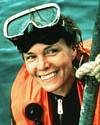 | There's plenty of water in the universe without life, but nowhere is there life without water. - Sylvia A. Earle, American oceanographer (born 30 Aug 1935).  |
 | [It] is not the nature of things for any one man to make a sudden, violent discovery; science goes step by step and every man depends on the work of his predecessors. When you hear of a sudden unexpected discovery�a bolt from the blue�you can always be sure that it has grown up by the influence of one man or another, and it is the mutual influence which makes the enormous possibility of scientific advance. Scientists are not dependent on the ideas of a single man, but on the combined wisdom of thousands of men, all thinking of the same problem and each doing his little bit to add to the great structure of knowledge which is gradually being erected. - Sir Ernest Rutherford, New Zealand-English physicist (born 30 Aug 1871).  |
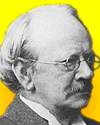 | This example illustrates the differences in the effects which may be produced by research in pure or applied science. A research on the lines of applied science would doubtless have led to improvement and development of the older methods�the research in pure science has given us an entirely new and much more powerful method. In fact, research in applied science leads to reforms, research in pure science leads to revolutions, and revolutions, whether political or industrial, are exceedingly profitable things if you are on the winning side. - Sir J.J. Thomson, English physicist (died 30 Aug 1940).  |
| Before you look at today's web page, see if you can answer some of these questions about the events that happened on this day. Some of the names are very familiar. Others will likely stump you. Tickle your curiosity with these questions, then check your answers on today's web page. |
 | Sylvia A. Earle, born 30 Aug 1935 is an American oceanographer who is a devout advocate of public education regarding the importance of the oceans as an essential environmental habitat. In 1990, Earle was named the first woman to serve as chief scientist of the U.S. federal agency that conducts underwater research, manages fisheries, and monitors marine spills.
 What are the initials of this agency? |
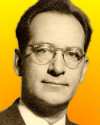 | John W. Mauchly, born 30 Aug 1907, was an American physicist and engineer, coinventor in 1946, with John P. Eckert, of the first general-purpose electronic computer.
 What are the initials (or acronym) of this computer's name? |
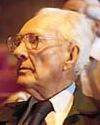 | Fred Whipple, an American astronomer died30 Aug 2004, at the age of 97. In 1950, Whipple suggested a certain structure for comets. His model was confirmed in 1986 when spacecraft flew past Halley's comet.
 What is the nickname for the comet structure that Whipple suggested? |
 | Sir J(oseph) J(ohn) Thomson (1856-1940) was the English physicist who helped revolutionize the knowledge of atomic structure with his discovery an atomic particle in 1897.
 What was the particle he discovered? |
| On 30 Aug 1979, the first recorded occurrance of a comet hitting a certain body in our Solar System occurred (the energy released was about equal to 1 million hydrogen bombs).
 What body was struck by the comet? |
When you have your answers ready to all the questions above, you'll find all the information to check them, and more, on the August 30 web page of Today in Science History. Or, try this link first for just the brief answers.
Fast answers for the previous newsletter for August 29: electric starter • Monopoly • Mt • circumnavigation of the world's polar axis through the North Pole and the South Pole • decade of 1965. |
 If you enjoy this newsletter, the website, or wish to offer encouragement or ideas, please send feedback by using your mail reader Reply button. If you enjoy this newsletter, the website, or wish to offer encouragement or ideas, please send feedback by using your mail reader Reply button. |
--
If you do not want to receive any more newsletters,
Unsubscribe To update your preferences and to unsubscribe visit
this link 


 Sir John Rennie was born on 30 Aug 1794, to a father who was himself a great engineer, and that was the same profession for which the young Rennie trained. Their works include some distinctive features in London—three bridges that span the River Thames. One is named the Waterloo Bridge, another after Southwark, and probably the most famous was London Bridge (not to be confused with Tower Bridge). In this chapter on Sir John Rennie from Captains of Industry (1890), you can trace young Rennie through his preparation, travel around Europe to experience the great structures there, and to his achievements. Like his father he became a distinguished engineer of ports and land drainage works. He was consulted about several important early railway schemes. The Royal William Yard, Plymouth was purpose built in 1835 by Sir John Rennie as a naval victualling yard. Around 70 Martello towers were build around the south east shores of England under his direction as defensive positions to protect English shores from French invaders. Are the great engineers of today so versatile?
Sir John Rennie was born on 30 Aug 1794, to a father who was himself a great engineer, and that was the same profession for which the young Rennie trained. Their works include some distinctive features in London—three bridges that span the River Thames. One is named the Waterloo Bridge, another after Southwark, and probably the most famous was London Bridge (not to be confused with Tower Bridge). In this chapter on Sir John Rennie from Captains of Industry (1890), you can trace young Rennie through his preparation, travel around Europe to experience the great structures there, and to his achievements. Like his father he became a distinguished engineer of ports and land drainage works. He was consulted about several important early railway schemes. The Royal William Yard, Plymouth was purpose built in 1835 by Sir John Rennie as a naval victualling yard. Around 70 Martello towers were build around the south east shores of England under his direction as defensive positions to protect English shores from French invaders. Are the great engineers of today so versatile? 



 What are the initials of this agency?
What are the initials of this agency? 
 What are the initials (or acronym) of this computer's name?
What are the initials (or acronym) of this computer's name? 
 What is the nickname for the comet structure that Whipple suggested?
What is the nickname for the comet structure that Whipple suggested? 
 What was the particle he discovered?
What was the particle he discovered?  What body was struck by the comet?
What body was struck by the comet?  If you enjoy this newsletter, the website, or wish to offer encouragement or ideas, please send feedback by using your mail reader Reply button.
If you enjoy this newsletter, the website, or wish to offer encouragement or ideas, please send feedback by using your mail reader Reply button. 

Δεν υπάρχουν σχόλια:
Δημοσίευση σχολίου